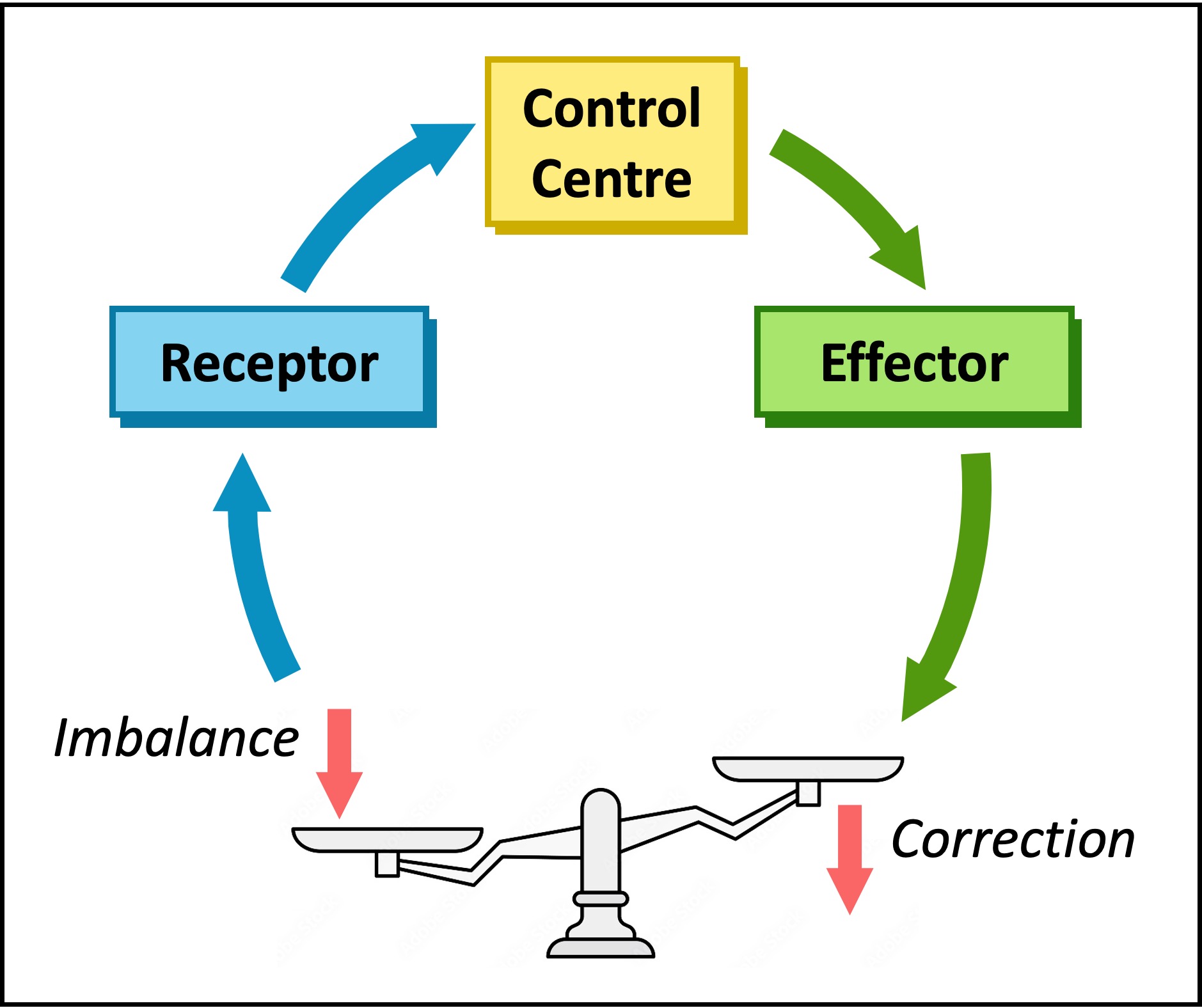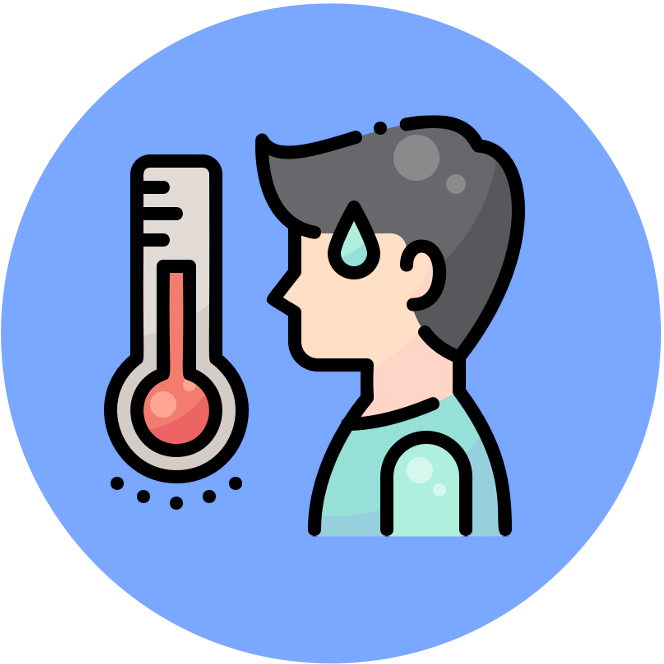

Homeostasis
Homeostasis is the tendency for an organism or cell to maintain a constant internal environment within tolerance limits
-
Homeostatic mechanisms operate via feedback loops that may involve either the nervous or endocrine systems (or both)
If a physiological condition moves outside of a narrow set of tolerance limits, disease will occur as a consequence
-
A disease is a condition that disrupts the body's homeostatic processes, leading to a deterioration in the state of health (illness)
Internal equilibrium is maintained by adjusting a variety of physiological processes, including:
-
Body temperature (normally between 36 – 38ºC)
-
Blood pH (normally between 7.35 – 7.45)
-
Blood glucose levels (normally 75 – 95 mg/dL)
-
Blood osmotic concentrations (varies depending on individual body size)
Homeostasis

Feedback Loop

Healthy vs Diseased
Physiological processes are commonly moderated via two distinct feedback mechanisms – positive and negative feedback
-
Homeostatic processes are controlled by negative feedback and hence these systems occur more commonly within the body
Negative Feedback
Negative feedback involves a response that is the reverse of the change detected (it functions to reduce the change)
-
A change is detected by a receptor and an effector is activated to induce an antagonistic (opposite) effect – this promotes equilibrium
Examples of processes that utilise negative feedback loops include homeostatic systems, such as:
-
Thermoregulation (if body temperature changes, mechanisms are induced to restore normal levels)
-
Blood sugar regulation (insulin lowers blood glucose when levels are high ; glucagon raises blood glucose when levels are low)
-
Osmoregulation (ADH is secreted to retain water when dehydrated and its release is inhibited when the body is hydrated)
Feedback Loop

Positive Feedback
Positive feedback involves a response that reinforces the change detected (it functions to amplify the change)
-
Positive feedback loops will continue to amplify the initial change until the stimulus is removed – they do not promote homeostasis
Examples of processes that utilise positive feedback loops include:
-
Childbirth – stretching of uterine walls cause contractions that further stretch the walls (this continues until birthing occurs)
-
Ovulation – the dominant follicle releases oestrogen which stimulates LH and FSH release to promote further follicular growth
-
Lactation – the child feeding stimulates milk production which causes further feeding (continues until baby stops feeding)




